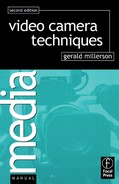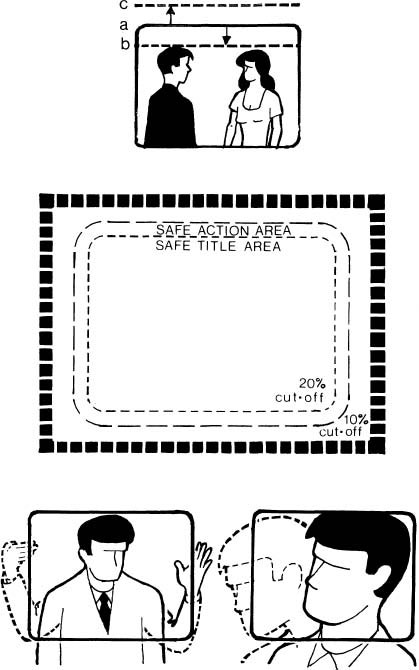We are so willing to accept the flat framed image on our TV screens as ‘real’, that we tend to overlook how artificial it actually is. We have become accustomed to the various strange effects we see there, and now regard them as ‘natural’!
The flat screen and the restrictive frame around the picture, can produce some very strange illusions, which directly influence our interpretation of what we are looking at:
• Subjects that are some distance apart, can appear joined together – e.g. a distant post appearing to ‘grow’ out of someone’s head.
• The apparent shapes and sizes of objects in the scene can vary with the lens angle and the subject’s distance (perspective distortion).
• The effects of tone and color can change dramatically. Even a small area of brilliant color can dominate a shot if it is near the camera … yet become insignificant if the lens angle or the viewpoint changes.
• A surface’s apparent tone and color can depend on its effective size, clarity, texture, the angle and color of the light, and the surroundings.
• A number of subjects can seem to be grouped together in a unified group or forming a pattern, simply as a result of the camera’s viewpoint.
• The frame can appear to interact with subjects near the picture’s edge; restricting, crushing down, cutting them off, drawing them outwards.
• A picture’s balance will vary as you reposition a subject in the frame.
In tight close-ups, the frame seems to confine and obstruct the subject. Very loose framing leaves considerable space around the subject, and can give an impression of isolation, emptiness, space.
If there is too little room between the top of a person’s head and the top of the frame, a shot looks cramped. Too much, and it looks bottom-heavy. Even a slight tilt of the camera alters the headroom considerably. The closer the shot, the less the headroom needed. But it should be consistent between similar shot sizes, and between different cameras’ pictures.
Although viewfinders show the entire picture, TV receivers are often overscanned so that picture edges are lost beyond the screen surround. Avoid placing items or titling near the frame edges, or they may be cut off.
Headroom
The space between heads and the top of frame should be adjusted for attractive vertical balance, (a). It should not be excessive as in (c) which gives a bottom-heavy effect, not too little as in (b) which gives a cramped effect.
Safety margins
Any subjects falling near picture borders are liable to be masked off by the TV receiver. So keep action and titles within the safe areas.
Tight frames
On very close shots, subjects can easily move outside the frame.

